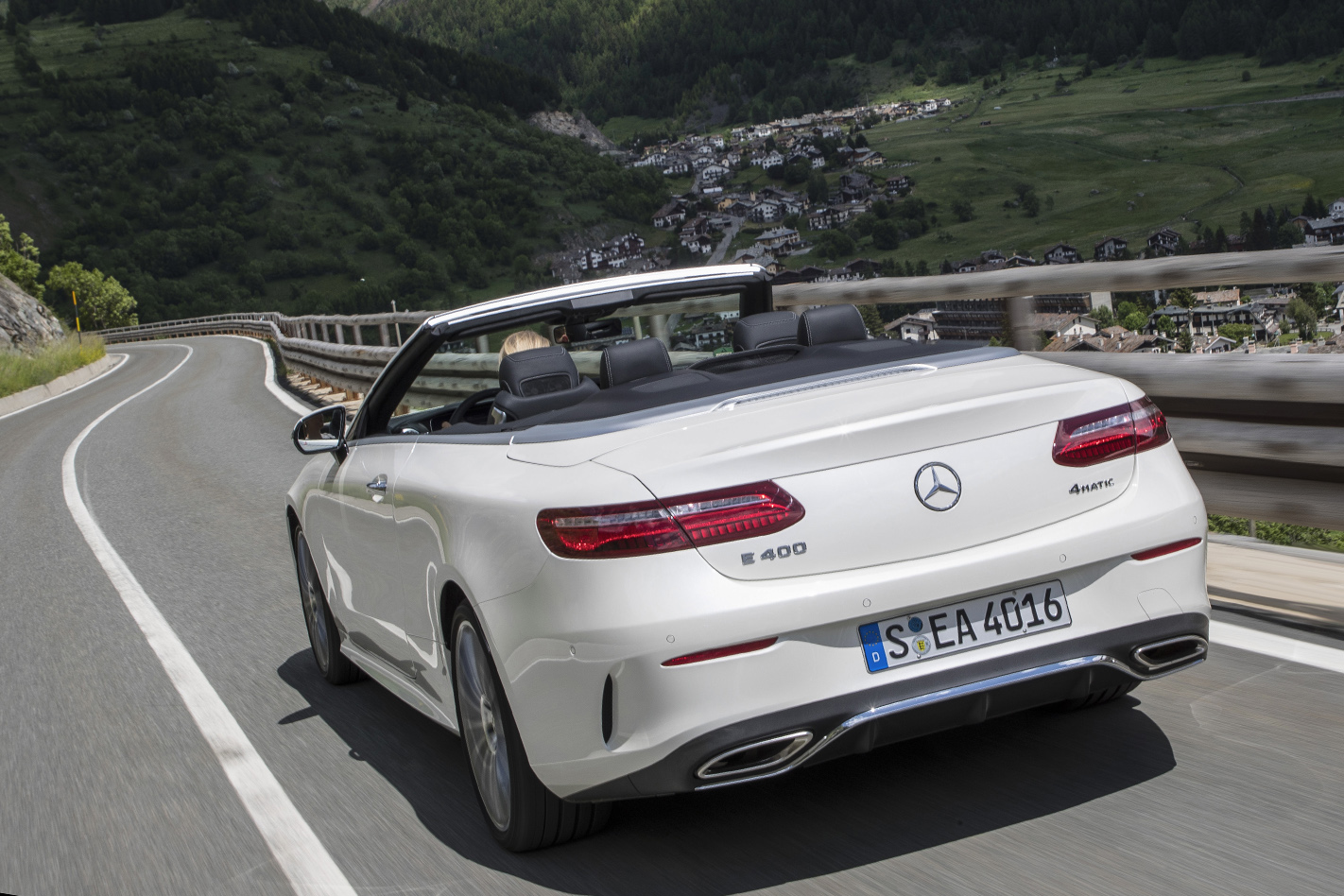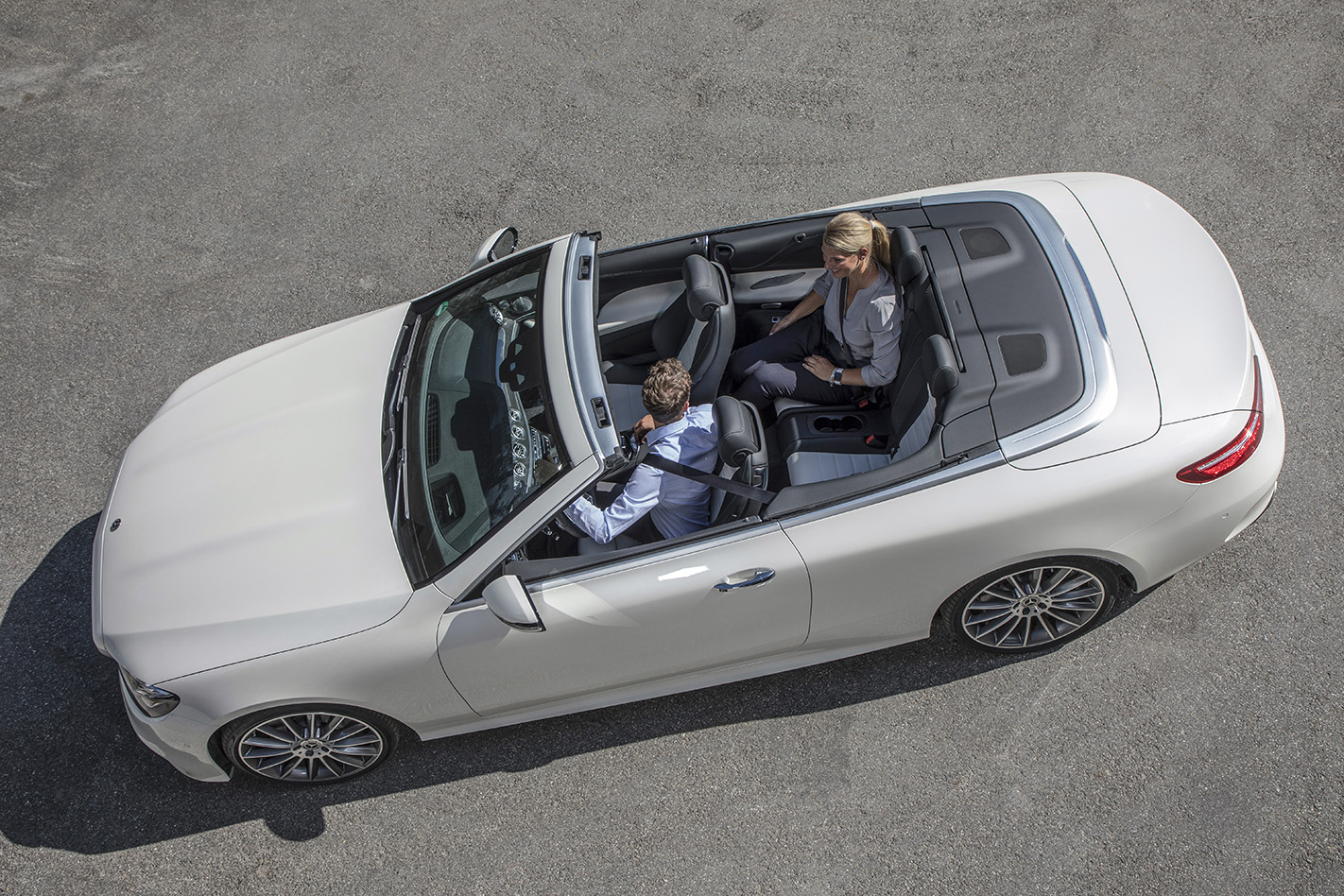OUR first taste of the new Mercedes-Benz E-Class drop-top shows Benz’s big convertible is back on a path to greatness
WHAT IS IT? The fifth model in Mercedes-Benz’s ever-growing E-Class family, and the first E-Class Convertible in a long while to be an all-E-Class offering right to its very core.
WHY WE’RE TESTING IT The old E-Class Cabrio was a lukewarm offering that was hobbled by its C-Class underpinnings, leaving it with a cramped interior and cabin design that was at odds with the E-Class sedan of the day. This all-new E-Cabrio rights all of those wrongs.

THE WHEELS VERDICT The new E-Class Cabriolet is leaps and bounds ahead of its heavily compromised predecessor, and is an exceptional grand-tourer. After all, it’s much easier to see the sights when you don’t have a roof in the way.
PLUS: No scuttle shake; lots of passenger space; uncompromised drive; strong V6 turbo MINUS: E300 isn’t as effortless as V6; dorky Aircap system; upright rear backrests

Less intuitive was Mercedes-Benz’s stunt of helicoptering their new drop-top to an observation deck atop Mont Blanc, the tallest peak in Western Europe. A not-so-subtle metaphor about “reaching new heights”? Marketing-speak can be cringe-worthy, but this time around such a claim would at least be accurate.

As far as four-seat convertibles go, it’s one of the best.

So Mercedes wins by default, but that’s not to say it doesn’t deserve the crown. After all, the A238 E-Class Cabriolet compromises very little as a result of its roof-ectomy. Rear seat space is huge thanks to a 113mm wheelbase stretch relative to the outgoing Cabrio (overall length swells by 123mm), while overall width grows by 74mm. That nets 102mm more rear legroom and 14mm more rear shoulder room – perfect for the wealthy two-kid families that Benz envisions being among the typical E-Class Cab buyer.

The rear backrests are quite upright and adults taller than 5’10” may brush against the headlining, but these are the sum total of our complaints about the rear seats. Looking for a convertible that can carry? Here it is.
A smaller gripe is Benz’s Aircap system – a complex windblocker arrangement that pairs a power-retractable spoiler above the windshield with a more conventional screen behind the rear seats. It’s highly effective, enabling easy speech and hairdo-friendly airflow with the roof down, windows up and Aircap deployed, but it looks tremendously dorky with everything extended and spoils the otherwise graceful form of the Cabrio.

And the folding multi-layered fabric roof is fantastic. Powering up or down in just 20 seconds at speeds up to 50km/h, it tucks neatly into the boot (cutting 75 litres from the 385 litre overall capacity) and, when raised, insulates the cabin from wind and traffic noise.
However the E-Class Cabrio’s most laudable trait is just how solid it feels. Scuttle shake is the enemy of convertibles, but Benz’s engineers seem to have vanquished it. Roof down, there’s barely any structural shimmy at all.

That rigid chassis is matched by supporting hardware that’s just as good: steering with a fluid feel and natural weighting that, in Comfort mode, matches the effortless nature of the E400’s chassis and powertrain perfectly, coupled with multi-link suspension front and rear which delivers exceptional ride quality if you option in air springs.

And speaking of the differences between powertrains, it’s the E400’s 245kW/480Nm twin-turbo 3.0-litre V6 that’s better suited to the E-Class Cabrio’s nature as a relaxed, comfortable grand-tourer. Bursting with low-end torque and a powerful midrange, it makes light work of motivating the 1935kg E400 and barely sweats up steep alpine roads. Meanwhile the E300’s turbo 2.0-litre four-pot supplies a decent 180kW/370Nm output, but needs plenty of revs on the dial to get moving smartly.

Like the E-Class Coupe, E200, E220d and E350d variants are available overseas but won’t be coming to Australia. For us, the E300, E400 and the eventual Mercedes-AMG E53 will be the only powertrain options for the E-Class Cabriolet.
The E-Class Cabriolet will begin arriving in Australia in September, with pricing and local specifications to be confirmed soon.

Model: Mercedes-Benz E400 Cabriolet Engine: 2996cc 6cyl, dohc, 24v, turbo Max power: 245kW @ 5250-6000rpm Max torque: 480NM @1600-4000rpm Transmission: 9-speed automatic Weight: 1936kg 0-100km/h: 5.5sec (claimed) Economy: 8.6L/100km (claimed) Price: TBA On sale: September





